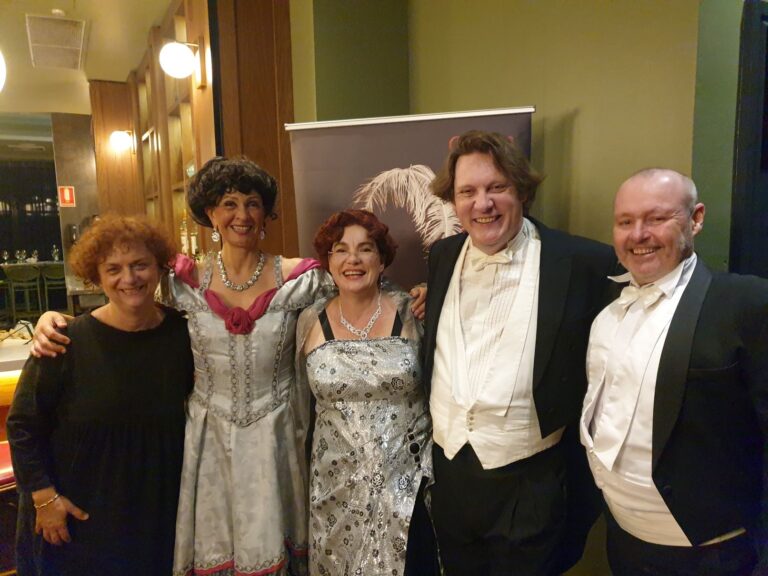
Opinion: Sydney wins planning award for ‘pie-in-the-sky’ vision
Not a day goes by without a member of the Clover Moore Party talking about “Sustainable Sydney 2030”, usually with the word “vision” sprinkled liberally in the speech or press release. It’s full of nice, practical green ideas like light rail, local power generation and affordable housing.
Inner Sydney residents, whom surveys show to be mostly green in their sympathies, lap it up. It was the Moore party’s central platform at the last election and it worked a treat with an extra Moore councillor winning a seat, giving the group absolute control over every committee and council vote without having to resort to the Lord Mayor’s previously often-used casting vote.
Now the 2030 plan has won the coveted President’s Award from The Planning Institute of Australia, sharing the prize with Melbourne’s Future Community Plan.
But critics note that the City has little power to realise the plan because the big-ticket items – transport, power and development – are controlled by the State Government, which is stuck in a mid-1950s mindset.
To be fair to the 1950s, the current state elite is even worse because on top of its anachronistic mindset of roads, coal, roads and more coal it has adopted the worst of the late 20th century with its privatisation and populist law-and-order agendas.
In the ’50s, Sydney was decommissioning trams in favour of the newly affordable private car and government was still capable of investing in major infrastructure like the Snowy Hydro Scheme.
Now, the state government has an irrational aversion to light rail and has abandoned all the major rail projects which are Sydney’s only hope of a transport-efficient, green future. It is not-so-secretly proceeding with a plan to build more tollways, extending the M4 East with major underground roadways linking Rozelle and the airport, some of it underneath Glebe.
Transport experts warn this will only induce more polluting traffic and create a chokepoint at the ANZAC Bridge, adding to the extra traffic induced by the Iron Cove Bridge duplication.
Meanwhile the $300 million cycle network spruiked by the City and surrounding councils has repeatedly been overlooked by Anthony Albanese’s Infrastructure Australia, and the Rees Government is rushing ahead with its ill-conceived $436 billion metro project connecting Rozelle and Central. This will preclude expansion of the existing light rail line because the disused rail corridor at the Lilyfield end will be used for removing spoil from the tunnelling.
So if the award-winning 2030 Sustainability plan is effectively pie-in-the-sky, what’s the point of it? What’s the use of employing enlightened people like Jan Gehl to give talks about pedestrianising and greening Sydney when the state is effectively run by trogdolytes in the RTA? Is the plan any more than a convenient election platform for Clover Moore?
Well, yes it is. Even if it never comes about, at least we now have a credible and public strategy to bring Sydney into the new millennium. Clover Moore has used the considerable resources of the City to create a vision which, if nothing else, shows up the state government as a bunch of ignorant meatheads, and that is having political repercussions. It affects the the media discourse which affects the voters’ view statewide, including in those precious marginal seats the major parties covet.
The Lord Mayor’s alter-ego, Clover Moore MP, is a lone voice in Parliament with a small budget, bullied and ignored by the two major parties.
But as Lord Mayor she has significant executive power over our biggest city and its council machine. That’s why in 2003 Labor fused the City with South Sydney and parts of Leichhardt, creating a ‘jewel in the crown’ which they assumed was theirs for the taking. Then Clover threw her hat into the ring and transformed it into a crown for herself, supported by an inner city electorate that Labor does not understand and always underestimates.
Ms Moore is fairly criticised for not being nearly as green as she could be, for being more talk than action, for compromising her performance by holding down two full-time jobs, and for allowing the Council bureaucracy to keep its unaccountable, arrogant, top-down modus operandi. Nevertheless with the 2030 plan she has used the City’s resources to create a powerful political vision and a force countering the state juggernaut.
While Ms Moore is massively outgunned, a David to the state’s Goliath, at least David now has a sling and a big rock, and the electorate has been provided a well articulated and credible vision for a sustainable, liveable city.
If a week is a long time in politics, the two years until the next state election offer at least a chance to change the political wind and to mitigate the environmental and economic chaos the major parties seem determined to inflict on us. The beneficiaries at state level will be The Greens and other environmentally aware parties, and Ms Moore is no doubt well aware of that. It’s a big-picture strategy and it deserves its Planning Institute award.









